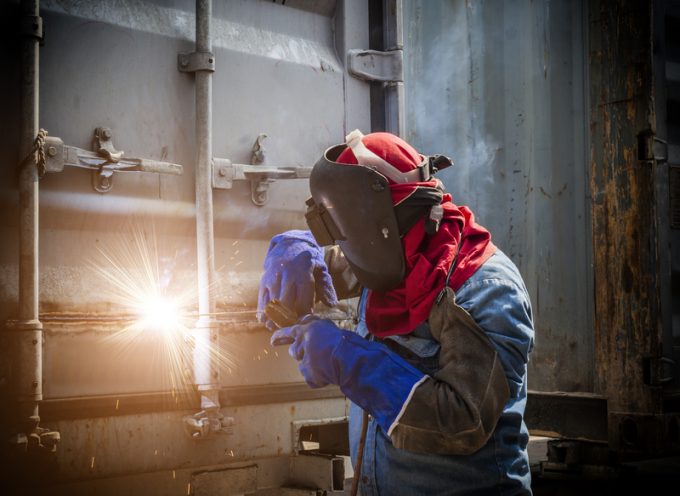Zim enjoys record growth at double the market rate
Israeli container shipping line Zim beat Wall St expectations after reporting healthy third-quarter results, which ...
WTC: PUNISHEDVW: UNDER PRESSUREKNIN: APAC LEADERSHIP WATCHZIM: TAKING PROFITPEP: MINOR HOLDINGS CONSOLIDATIONDHL: GREEN DEALBA: WIND OF CHANGEMAERSK: BULLISH CALLXPO: HEDGE FUNDS ENGINEF: CHOPPING BOARDWTC: NEW RECORDZIM: BALANCE SHEET IN CHECKZIM: SURGING TGT: INVENTORY WATCH
WTC: PUNISHEDVW: UNDER PRESSUREKNIN: APAC LEADERSHIP WATCHZIM: TAKING PROFITPEP: MINOR HOLDINGS CONSOLIDATIONDHL: GREEN DEALBA: WIND OF CHANGEMAERSK: BULLISH CALLXPO: HEDGE FUNDS ENGINEF: CHOPPING BOARDWTC: NEW RECORDZIM: BALANCE SHEET IN CHECKZIM: SURGING TGT: INVENTORY WATCH

As Christmas nears and shippers and their forwarders across Europe and North America continue to face a widespread shortage of containers, port congestion issues, reduced vessel capacity and soaring prices, the question on everyone’s lips is when the container industry’s current bull run will end.
The answer, according to new analysis by SeaIntelligence CEO Lar Jensen, on behalf of the Baltic Exchange, is most likely to be around February’s Chinese New Year holiday, due to the paucity of options available to supply chain stakeholders.
The root cause of the current problems was the unexpected demand for containerised goods created in the wake of global social lockdowns, which have decimated the services and entertainments sectors and left consumers with little else to spend disposable income on.
Mr Jensen said fulfilling the higher demand levels was problematic because of capacity constraints in three key areas: containers, vessels and ports.
“If the demand abates, the problem gets resolved almost immediately,” he wrote.
“However, the carriers will likely show their resolve and yet again reduce vessel capacity, matching the decline, which means that the very high spot rates will come down somewhat, and the new surcharges for equipment availability will disappear. But rates are unlikely to collapse,” he added.
Industry consensus in this strangest of years is hard to come by, but there are few signs presently of consumer demand declining any time soon.
The most pressing problem for many shippers and forwarders is the acute lack of equipment, but with Chinese container factories now working at full production, Mr Jensen said this was likely to ease by Chinese New Year, which begins on 12 February.
“This problem is solvable on a timeframe measured within a couple of months. The solution is a combination of faster return of empties from, especially, Europe and North America, in combination with container factories in China working flat out … setting an end of the current situation to coincide with the lull after Chinese New Year ,” he said.
However, global vessel and port capacity are issues that will take far longer to resolve. The traditional pressure valve for liners in times of capacity shortages is to turn to the charter market. However, due to the demand surge, there are only a handful of vessels available for hire.
“Hence increasing capacity went from a timescale measured in weeks to a timescale now measured in years, as it would require newbuildings. And, as the demand peak is likely temporary, this solution will not help the problem,” he wrote.
The other option available to lines is to increase vessel speeds – faster service unlocks structural capacity in a shipping string – although this does come with increased costs.
“Vessels can, in general, not sail as fast as they did a decade ago, as they have been modified or built with fuel optimisation in mind – but there is some degree of additional capacity left to be activated. It should, however, be kept in mind that this too would come at a cost.
“Not just in terms of dollars and cents, but also in terms of a sharp increase in carbon emissions,” he wrote.
Lastly there is the issue of port capacity, but little can be done about this in the short term, he admitted.
“The surge in demand and rapid increase in vessel arrivals strains capacity, both in terms of how many containers can be handled within the port, but also how many ships can be at berth and be serviced.
“Additionally, the demand boom leads to larger vessels arriving with more cargo than originally planned – this means longer time spent at berth creating a knock-on effect with subsequent vessels also getting delayed.
“Expanding port capacity is, at best, a process measured in a few years. In some locations, as much as a decade for major expansion projects.”
Comment on this article